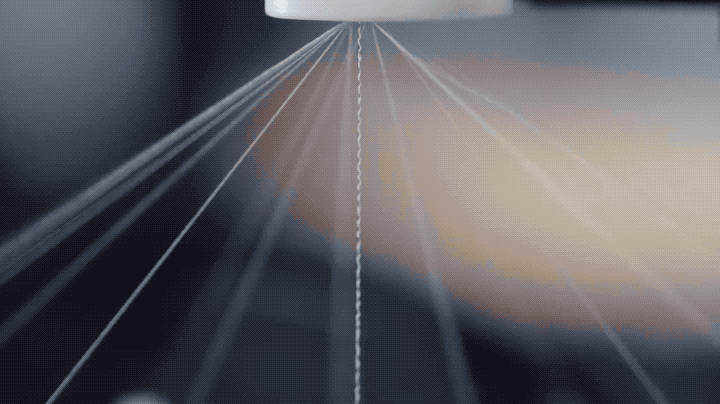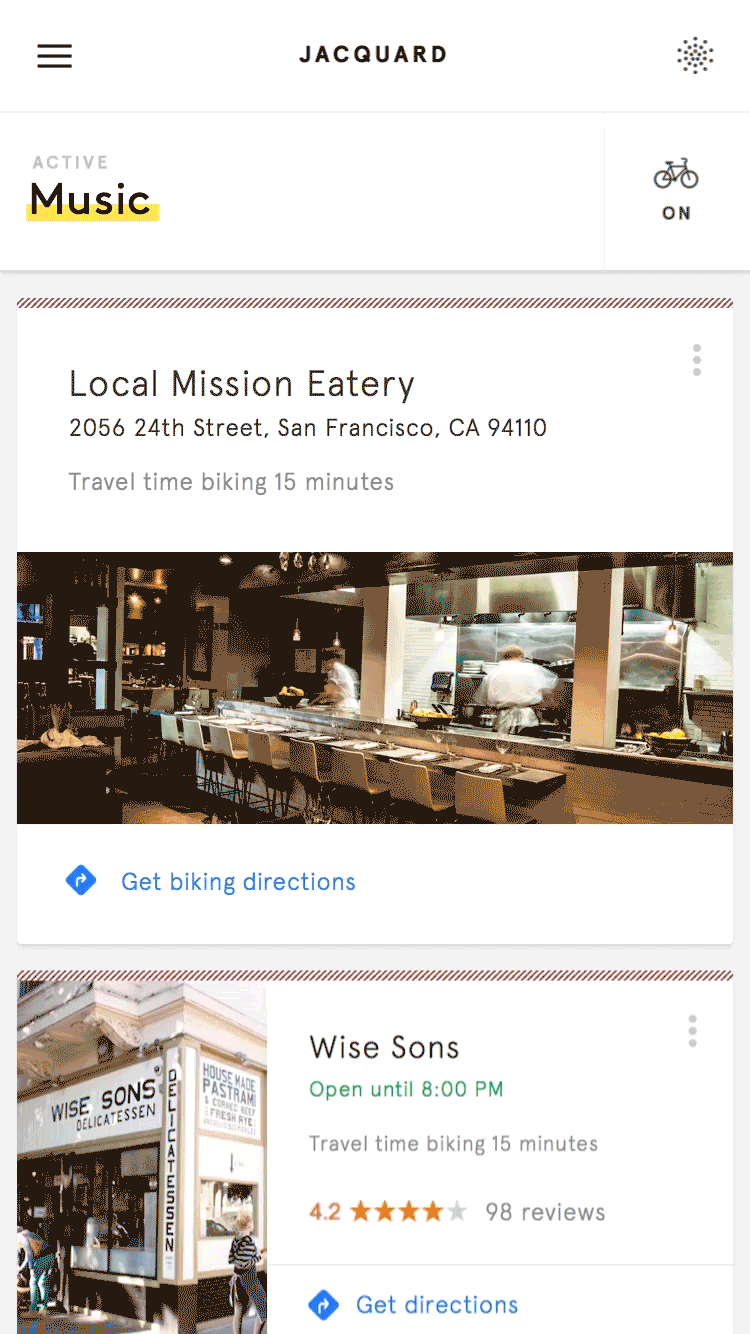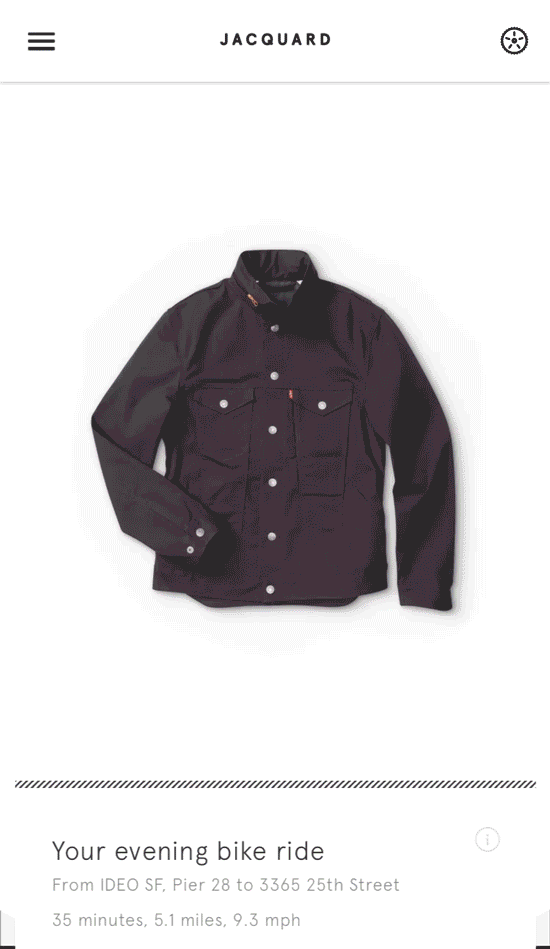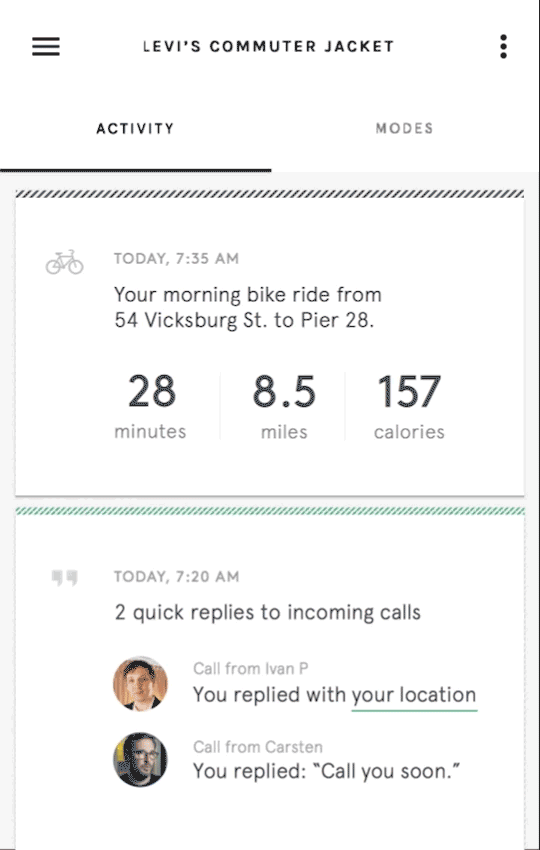Client: Google Advanced Technology and Projects (2015–16)
Using design to bring Google’s Jacquard technology to market
Awards: SXSW Interactive Innovation Award in Wearable Tech (2018), Permanent Collection at Cooper Hewett (2017), Cannes Lions Grand Prix in Design (2016)
My Role: Design Director and Program Lead
When Google teamed up with Levi’s to craft a jacket with technology woven in, the company turned to IDEO to help make the experience of wearing the garment feel seamless, intuitive, and familiar.
My role was Lead on the program, responsible for all the design aspects of the product and platform launch.
Google’s Advanced Technologies and Projects team was in the midst of developing a process for weaving conductive threads into textiles. Fabrics and yarns could be manufactured with standard equipment already used in mills around the world. With components that are cost-efficient to produce, everyday objects such as clothes and furniture could be transformed into interactive surfaces.
An exciting technology! But, how might we commercialize this innovation in a way that’s compelling to the end user? We spent time on the project early on, collaborating with Google engineers and Levi’s clothiers on the development of a Levi's jacket, helping craft an experience that would make the intelligent threads intuitive to wearers.
Levi’s established consumers of their Commuter Line as our target—urban cyclists looking for stealthier performance wear—we set out to gather inspiration from users of all types. We spoke to daily commuters, but also more “extreme” users: bike couriers, rallycat racers, and bicycle- powered food carts. In interviews, group exercises, and wear tests with urban cyclists and other workers on the go, we heard over and over again that cyclists needed a way to stay connected, while still living in the moment. That meant being able to answer calls, hear text messages, get the next direction, and control their music without using a screen.
"My phone is actually one of my biggest distractions while riding."
—Early Research Participant
Having identified our value proposition and philosophical approach to the product (“designing the right thing”), we turned to the various aspects of the product design itself (“designing the thing right”).
First up was the physical design of the jacket and hardware. Levi’s garment design is legendary, and was left in their capable hands. But what to do with the new electronic components? Google was keen to miniaturize the electronics as much as possible so they could be embedded in the jacket, but our team felt like there was a better solution. After all, this is a new type of fashion with new paradigms for users. Are we also going to require them to remember to “plug in” their jacket in the evening?
Our recommendation was to instead externalize most of the electronics in a “snap tag” (the tag snaps onto the jacket’s cuff and connects to your phone via Bluetooth).
Snap tag prototypes
The tag snaps on the jacket’s cuff, which gently notifies users of calls, texts, and other jacket interactions with light and vibration feedback. The flexible, lightweight strap incorporates the look and feel of a Levi’s jean button, while housing advanced electronics that capture touch data. The tag is removable, charges via USB connection, and works in conjunction with a mobile app that lets users configure settings for the garment, set notifications, and customize gestures and interactions.
This is Ethan, software engineer by day, testing the gesture recognition firmware. He's imagining he's on his morning bike ride.
Next, we needed to consider a vocabulary of gestures on the cuff of the jacket that lets the user interact with the jacket’s technology. Through rigorous testing in Mountain View the Google team resolved that we could reliably detect about 15 unique gestures performed by the user. Even so, we felt like in a pilot release we should keep the gesture set as lean as possible. We eventually landed on about 5 gestures that were both simple and memorable. We developed the language of movement to feel familiar and human, building on the ways people would naturally interact with a garment (a whole-hand brush along the sleeve, as opposed to a one-finger tap on a touch screen, for instance). We also relied on mnemonics to teach functionality to the user. For example, the “genie” gesture is performed by rubbing the cuff like a lamp and activates the Google Assistant voice technology.
IDEO designers create moodboards for Jacquard's app experience.
Example moodboard
Finally, we considered the interaction model of the corresponding smartphone app that ties it all together (works with both iOS and Android phones). Over the course of six months, three fully functional prototypes, and testing with over 50 commuters, we identified a model that was full-featured, yet simple enough for users to understand. Users are able to “build their own functionality” by connected certain gestures to various digital services.
For example, you’re whizzing along on your bike, en route to a new restaurant for a client meeting. You reach an unfamiliar intersection; which way to go now? Instead of dismounting and digging for a phone, you brush your hand along your jacket sleeve for directions, then double-tap the denim to re-start your music. Without taking your eyes off the road, you’ve taken care of the problem.
This is the first connected garment that helps us break free from devices. It seamlessly incorporates Jacquard by Google technology to perform digital tasks, such as navigation, communication, and music playing with a few swipes or taps on the sleeve. Our hope is that it changes the game for wearables because it’s simply that—a garment—with technology that adds new utility and value, allowing us to wear our everyday interactions on our sleeves.
As Amir Ishmael of Business Insider reports,
“It’s the most intuitive and stylish piece of wearable tech I’ve tried. It’s also the easiest way to stay connected to your smartphone and the outside world while commuting.”
In 2016, the product was awarded the prestigious Product Design Grand Prix at the Cannes Lions Festival. In 2017, it entered the permanent collection of the Cooper Hewitt, Smithsonian Design Museum. And in 2018, it was awarded the Interactive Innovation Award in Wearable Tech at SXSW.
“Google and Levi’s Project Jacquard jacket has restored my faith in wearables.”















